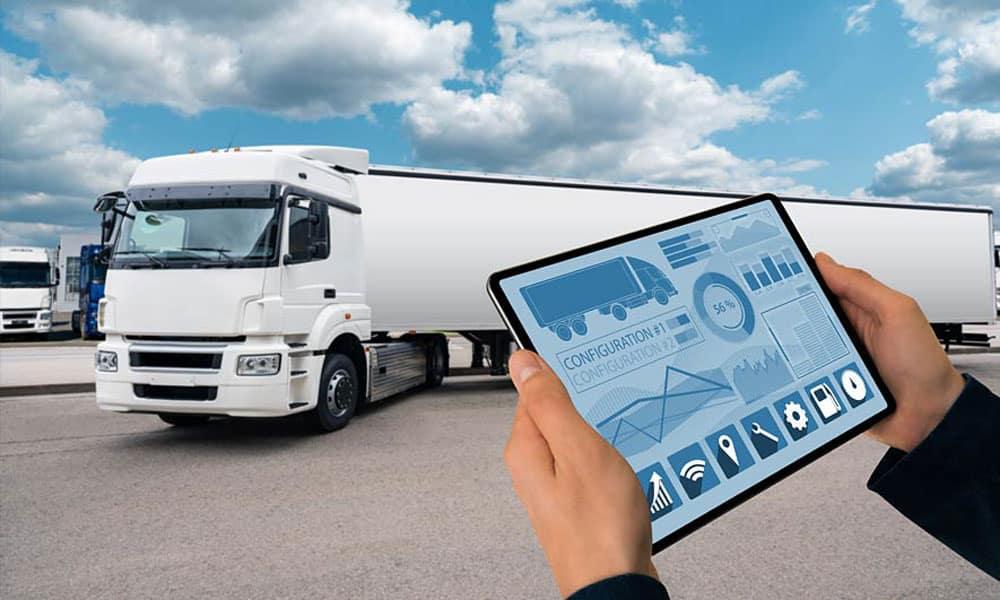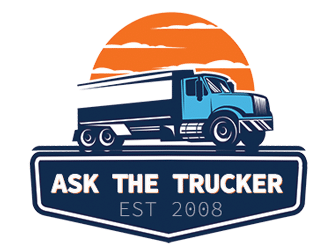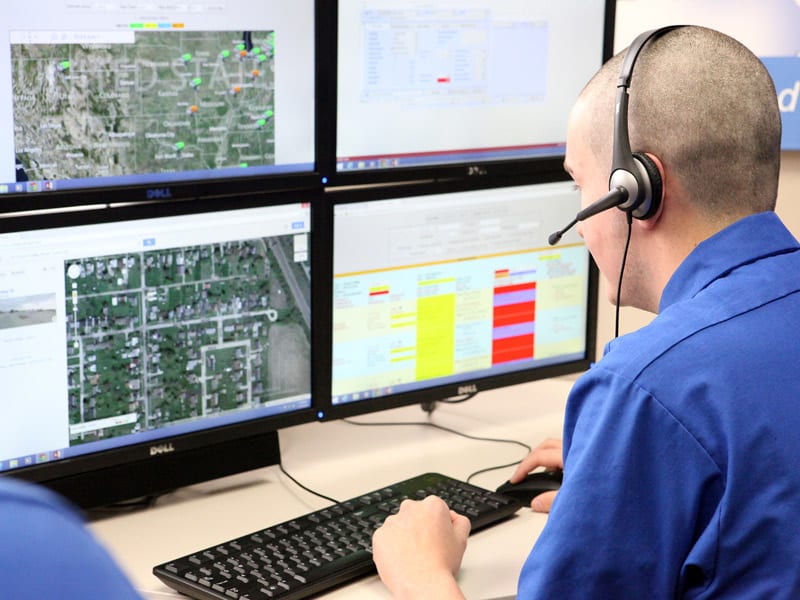What Is The Best Software For Dispatching & Managing Fleets?
Dispatching software is kind of a must-have for managing field operations now. It helps companies put the right people on the right jobs, keep schedules from getting out of hand, and track how work is moving along.
Software for dispatching services is built to help transportation companies assign jobs, track workers, and manage schedules without the usual headaches. It’s especially handy for businesses in trucking, logistics, construction industries. Any industry where staying organized and keeping customers happy can get tricky fast. With these dispatch tools, companies automate the boring stuff and keep their daily operations humming along.
Most dispatching software works on both mobile devices and computers, so techs in the field and folks in the office can actually stay in sync, swap updates, and shuffle schedules on the fly. Some of the best options out there throw in smart routing, automatic assignments, and quick handling of last-minute curveballs, like you’ll see in several leading dispatch software products.
The main idea? Get the right resources to the right place, right when they’re needed. With real-time monitoring and route tweaks, dispatchers can deal with surprises—traffic jams, sudden changes—without breaking a sweat. It just keeps everything smoother and lets people fix problems before they snowball.
With the right fleet software program, you can schedule jobs, assign techs or drivers, and make changes in real time. Most of these tools come with vehicle tracking, team chat, and route optimization baked in.
Some platforms even toss in reporting and analytics, so managers can actually see what’s working, spot trends, and make better calls. The whole point is to cut down on manual busywork, avoid mistakes, and run a tighter ship for both dispatchers and field teams.
Benefits for Service-Based Businesses
For service businesses, fast response and smooth workflows are everything. Dispatching software helps them step up service quality and keep costs under control. Instead of endless phone calls or chasing paperwork, everything just runs through one digital hub.
Some of the big wins:
- Smarter scheduling and routes: Less wasted time and gas.
- Instant updates: Dispatchers can react fast to whatever comes up.
- Better visibility: Managers always know where crews and vehicles are.
- Fewer mistakes: Automation keeps errors to a minimum.
When everyone’s on the same page, customers are happier and jobs actually get done on time. Managing big teams and tangled schedules gets way less stressful.
Key Benefits for Transportation & Logistics Businesses
For transportation businesses, fast response and smooth workflows are everything. Dispatching software helps them step up service quality and keep costs under control. Instead of endless phone calls or chasing paperwork, everything just runs through one digital hub.
Some of the big wins:
- Smarter scheduling and routes: Less wasted time and gas.
- Instant updates: Dispatchers can react fast to whatever comes up.
- Better visibility: Managers always know where crews and vehicles are.
- Fewer mistakes: Automation keeps errors to a minimum.
When everyone’s on the same page, customers are happier and jobs actually get done on time. Managing big teams and tangled schedules gets way less stressful.
Key Features of Fleet Dispatching Service Software
Dispatching service software takes the chaos out of daily operations, smooths out workflows, and helps teams stay nimble. It’s about getting resources where they’re needed and keeping communication clear for everyone involved.
Real-Time Scheduling
Real-time scheduling is one of those features you don’t realize you need until you have it. Schedules update automatically as jobs come in or change, so there’s way less chance of double-booking or missing an appointment. Teams see what’s happening as it happens, which just saves a ton of headaches.
If a job gets canceled or something urgent pops up, dispatchers can tweak the schedule right away. It’s especially handy for companies juggling lots of service calls every day. Notifications go out to workers and customers, so no one’s left guessing.
Plus, managers can spot workload issues—too much or too little—and rebalance things quickly. With real-time tracking and updates, you get flexibility without the chaos.
Automated Routing
Automated routing does the heavy lifting when it comes to planning who goes where. The software checks traffic, distance, and which jobs matter most to map out the best path. That means less time stuck in traffic, more time actually getting stuff done.
Optimized routes also mean lower travel costs and less money burned on fuel. If traffic snarls or emergencies happen, the system reroutes instantly. Some platforms can even group nearby jobs, so techs aren’t crisscrossing town for no reason.
Field workers get clear directions right on their phones or tablets—no guesswork, just go. Features like route optimization and order batching make sure your resources aren’t wasted.
GPS Tracking Integration
With GPS tracking, managers can see where everyone is in real time—no more radio silence. It adds accountability and lets you keep tabs on the workday. You’ll know when someone arrives or leaves a job site, which is pretty useful.
Live location data makes it easy to send the nearest worker to urgent calls. It also helps spot traffic jams or slowdowns, so you can reroute if needed. If someone’s running late, dispatchers can let customers know without the awkward wait.
This level of tracking cuts down on unauthorized stops, protects company gear, and helps solve problems on the fly. Real-time tracking and visibility also keeps mobile staff safer.
Work Order Management
Work order management pulls all the job details into one spot. Orders can include everything—customer info, what needs fixing, time windows, even materials. No more lost paperwork or missed details.
Most systems let dispatchers build, update, and assign work orders digitally. Any changes are pushed to field workers instantly. Workers can add notes, snap photos, or grab customer signatures right in the app for easy record-keeping.
Being able to customize service templates means different industries can tweak workflows to suit their needs. Digital work orders just mean less paperwork, fewer mistakes, and faster billing—what’s not to like?
What Is The Best Fleet Dispatching Software For Beginners?

Samsara Fleet Management Software
Samsara brings a pretty robust set of tools for anyone managing a fleet, big or small. The cloud-based platform lets both drivers and dispatchers tap into key data from wherever they are—not just at a desk.
Key Features:
- Real-time GPS tracking and geofencing for up-to-the-minute location info
- Vehicle diagnostics so you can keep an eye on maintenance and catch problems early
- Fuel management tools that help track usage and (hopefully) save you some money
- Third-party app integrations via an open marketplace
- Mobile app for keeping drivers and staff in sync
- Route optimization that actually considers what’s happening out there
- Electronic Logging Device (ELD) compliance for tracking driver hours
The dashboard is pretty approachable—no need for a manual just to find basic info. Fleet owners can see hours worked, maintenance needs, fuel use, and how efficient their routes really are.
Dispatchers get real-time updates and can message drivers directly. Assigning jobs, tweaking routes, and running reports all happen inside the same system, which keeps things moving and avoids a lot of headaches.
Samsara isn’t just for trucking, either. Delivery services, catering, security, even government fleets—there’s something here for all of them. Pricing? It’s flexible, and depends on which features you need and how many vehicles you’ve got. Not exactly one-size-fits-all, but that’s probably for the best.
How Much Does Fleet Dispatching Software Usually Cost?
Dispatching software pricing is all over the map. Some charge per user each month, others base it on the number of jobs or vehicles you’re running. Free versions tempt you with the basics, but usually, there’s a catch—limits on users or features. If you want extras like advanced reports, GPS tracking, or integrations, expect the bill to climb.
If you’re watching your budget (and who isn’t?), it’s smart to jot down every possible expense: the main software fee, all the tempting add-ons, and what you’ll owe as your business grows. Laying this out against your budget can save you from those “wait, what?” moments down the line.
Long-term contracts might shave off some costs, but monthly plans are less risky if you think you’ll need to pivot.
Frequently Asked Questions
Dispatching software is designed to help companies juggle scheduling, routing, communication, and tracking. There are tools tailored for all sorts of industries—from trucking to small businesses—so most folks can find something that fits.
Which features are essential for effective dispatching software?
Honestly, you’ll want real-time GPS tracking, automated scheduling, and route optimization at a minimum. Good communication tools between drivers and dispatchers are huge, too. Reporting and integrations with other apps make life a lot easier if you’re trying to run a tight ship.
How does trucking dispatch software streamline fleet management?
Trucking dispatch software cuts down on manual route planning and keeps everyone in sync with live updates. Drivers can avoid delays, and managers get a clear picture of where vehicles are and how things are going. It’s really about making smarter decisions, faster.
What are the benefits of using dispatch software for small businesses?
For small businesses, dispatch software means less paperwork and fewer mistakes. It keeps jobs and schedules organized, so workers can just get on with their day. Plus, better communication with both customers and drivers leads to smoother operations and happier clients.
What considerations should be made when choosing a dispatching service software?
Honestly, there are a bunch of things to weigh. Pricing, for sure, but also how intuitive the software feels and whether you can tweak it to fit your workflow. Solid customer support can make a world of difference when things go sideways. Does it have features tailored to your field? And, maybe most importantly, will it play nicely with the systems you already depend on?
Final Thoughts
Dispatch software is honestly a lifesaver for service companies trying to keep up with daily demands. Automation takes over the grunt work—tracking, route planning, the repetitive stuff—so teams can actually focus on doing their jobs well.
Features like automated scheduling, route optimization, and live updates mean you can handle more calls without burning out your team. It just makes everyone more nimble and responsive to whatever pops up.
The big wins?
- Quicker response times
- Smoother communication
- Way fewer manual slip-ups
- Better overall organization
Here’s a quick comparison of the advantages:
| Benefit | Description |
|---|---|
| Efficiency | Speeds up daily operations |
| Productivity | Helps teams do more with less |
| Cost Savings | Cuts down on overtime and travel |
| Customer Satisfaction | Improves service and reliability |
Modern dispatch solutions really do help businesses keep up and stand out. If you’re curious about picking the best platform we can help you get started below.

